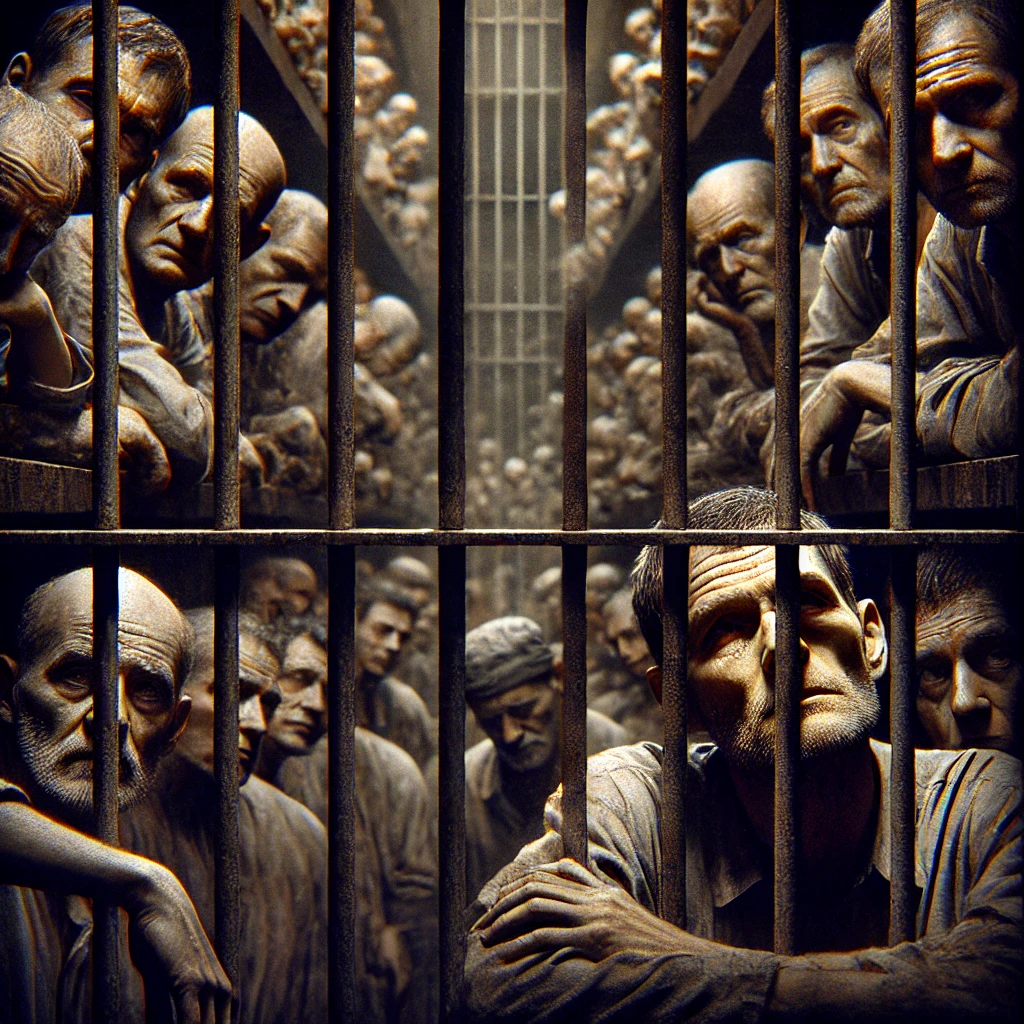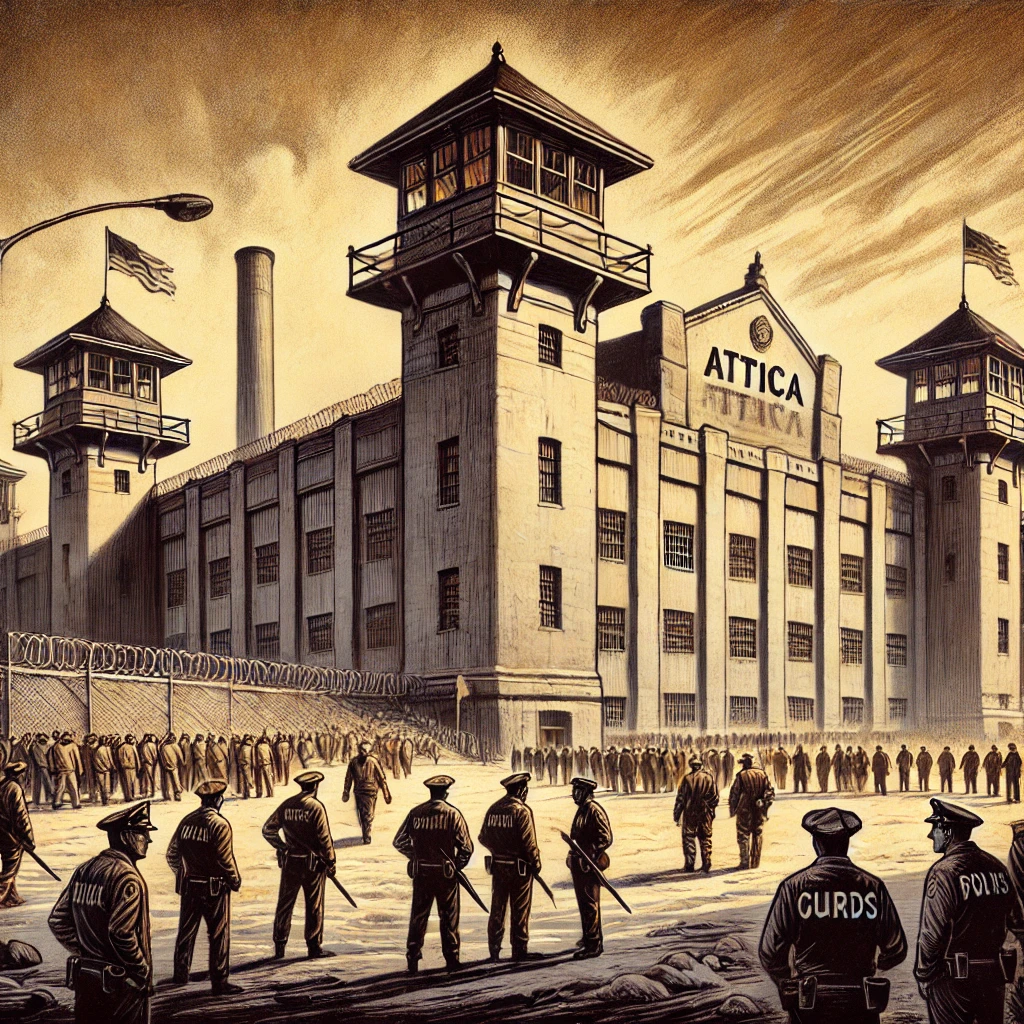On September 13, 1971, the Attica Correctional Facility in New York witnessed one of the most violent and tragic episodes in the history of the American prison system. The revolt, which began as a demand for better living conditions and civil rights for inmates, ended in a brutal confrontation between the inmates and state police. The aftermath of the conflict saw the deaths of 29 inmates and 10 hostages, marking a somber chapter in the history of American corrections.
The Genesis of the Revolt
The Attica Correctional Facility, located in upstate New York, had long been plagued by poor conditions, overcrowding, and inadequate facilities. By the early 1970s, these issues had reached a boiling point, leading to widespread discontent among the inmates. On September 9, 1971, a group of prisoners seized control of a section of the prison, taking 42 staff members hostage and demanding significant reforms.

The inmates’ grievances were rooted in a broader context of civil rights and prison reform. They sought improvements in living conditions, better medical care, fairer treatment, and greater respect for their human dignity. The revolt was also fueled by the broader social and political climate of the time, which included increased awareness of systemic injustice and inequalities faced by marginalized communities.
Negotiations and Tensions
In the days following the initial takeover, negotiations between the inmates and prison officials were intense and fraught with difficulty. The state government, led by Governor Nelson Rockefeller, was under immense pressure to resolve the situation. As negotiations continued, tensions within the prison escalated, and the inmates’ demands became more pronounced. The situation was complicated by the fact that the hostages were at risk, which heightened the urgency of finding a resolution.
The inmates’ demands included improved living conditions, educational opportunities, and the right to practice their religion. However, as negotiations dragged on, the situation became increasingly unstable. Reports of violence and threats from within the prison further strained the negotiations and raised concerns about the safety of both the hostages and the inmates.

The Decision to Use Force
On September 13, 1971, after several days of tense negotiations and deteriorating conditions, the decision was made to use force to end the revolt. Governor Rockefeller authorized a massive state police operation to retake control of the prison. The assault was carried out with a high level of violence, involving heavily armed state troopers and correctional officers.
The operation was swift and brutal, with state police using tear gas, rifles, and shotguns to subdue the inmates. The assault resulted in a bloody confrontation, with many inmates being killed in the crossfire. The use of excessive force was widely criticized, and the operation was marred by allegations of brutality and human rights violations.
The Aftermath and Casualties
The state police assault on Attica resulted in the deaths of 29 inmates and 10 hostages. The violence left the prison in disarray, and the aftermath of the assault revealed the extent of the casualties and destruction. The images of the bloody conflict were widely reported in the media, drawing attention to the harsh realities of the prison system and the treatment of inmates.
The aftermath of the riot also saw a significant public outcry and a reevaluation of prison conditions and reform. The violent resolution of the revolt highlighted the need for systemic changes in the correctional system and sparked a national conversation about the treatment of prisoners and the conditions within American prisons.
The Legacy of the Attica Riot
The Attica Prison Riot remains a landmark event in the history of American corrections. It exposed the deep-seated issues within the prison system, including overcrowding, inadequate facilities, and the need for reform. The violence and loss of life during the assault drew attention to the human cost of the conflict and the challenges faced by both inmates and prison officials.
The riot also had a lasting impact on the discourse surrounding prison reform. It galvanized advocacy groups and activists who pushed for changes in the treatment of inmates and the conditions within correctional facilities. The tragedy of Attica served as a stark reminder of the need for humane and effective solutions to address the issues facing the American prison system.
Reforms and Changes
In the years following the Attica riot, there were various efforts to address the issues highlighted by the revolt. The public outcry and the spotlight on prison conditions led to increased advocacy for reform and improvements in the treatment of inmates. Efforts included legislative changes, improvements in prison conditions, and increased focus on the rights and dignity of prisoners.
While some progress was made, many of the underlying issues that contributed to the Attica revolt continued to persist. The complex and multifaceted nature of prison reform meant that addressing the root causes of discontent and violence within the system required sustained effort and commitment.

Reflection and Accountability
The events at Attica prompted reflection on the role of state power and the ethics of using force in managing prison uprisings. The violent resolution of the riot led to calls for greater accountability and oversight in the handling of similar situations in the future. The need for balanced and humane approaches to conflict resolution within the prison system became a central concern.
The legacy of the Attica riot also underscores the importance of addressing systemic issues within the correctional system. Ensuring that the rights and needs of inmates are respected and that conditions are improved is essential in preventing future conflicts and promoting justice and fairness within the prison system.
Cultural and Historical Impact
The Attica riot has been the subject of extensive analysis and documentation, including books, documentaries, and academic studies. These accounts have contributed to a broader understanding of the events and their significance, offering insights into the complex dynamics of the prison system and the impact of the riot on American society.
The cultural and historical impact of Attica extends beyond the immediate events of the revolt. It has influenced discussions about prison reform, civil rights, and the treatment of marginalized communities. The tragedy of Attica serves as a powerful reminder of the need for continued efforts to address injustice and promote humane treatment within the correctional system.
Conclusion
The Attica Prison Riot stands as a stark and tragic chapter in the history of American corrections. The violent resolution of the conflict and the loss of life highlighted the urgent need for reform and the challenges faced by the prison system. The legacy of Attica continues to shape discussions about prison conditions, human rights, and the treatment of inmates. As society reflects on the events of September 13, 1971, the lessons learned from Attica remain relevant in the ongoing quest for justice and reform within the American prison system.
